Text
3 Simple Tips to Finish your TBR pile Fast!


Whether you are an avid reader or just starting out, here are some tips to avoid letting your to be read pile get the best of you.
1. Break It Up!
So you have a stack — or even just a list — of books you say you’re going to read, but the sheer volume of titles is starting to feel a bit overwhelming. The secret to combating this feeling is to avoid the long list all together! Break it up…
View On WordPress
0 notes
Text
It’s been a little over a month since Pepsi released its most recent advertisement starring Kendall Jenner, and so far it has sparked a conversation widely dominated by twitter posts, remixes, memes, and entertainment news sites.
While many news sources have covered Kendall’s response to the controversy and speculated about the source of Kendall’s original excitement to star in a Pepsi commercial – she is the first high-profile model to star in a Pepsi commercial since Cindy Crawford’s iconic role in 1992 – not many sources have discussed the impact of the responses as a whole or just what about the commercial inspired such a viral, passionate response so quickly.
Cindy Crawford 1992 Pepsi Commercial
Individually, the responses to the advertisement seem minimal – it can be easy to miss the issue if you aren’t constantly paying attention to a twitter feed. However, it is important to note that collectively, the different responses expressed through a variety of mediums express an important collective understanding: the rhetorical message of the Pepsi ad is unacceptable. But why?
Virality
Before I begin talking about responses to the Pepsi commercial, I would quickly like to define the concept of virality in the media; The term “going viral” refers to an image’s capacity to garner mass attention and spread due to word of mouth or media attention* (For more on the concept of Virality click: here).
A viral phenomenon is made possible by two things:
1. creating an image that is highly desired/admired
2. ensuring that a broad audience has access to the image so it can be redistributed*
The Commercial
Obviously, the goal main of an advertisement posted on the internet is to go viral. In this case, however, the reason the Pepsi ad gained viral attention is not that it was highly desirable or admirable, but rather because it was highly objectionable. It’s undesirable nature, the main reason for the commercial’s virality (apart from the fluidity of the internet), sparked a conversation that has become ongoing thanks to the continuity of content on the internet. If you haven’t seen the commercial for yourself, you can watch it here.
One reason why the Pepsi ad was so objectionable from the beginning is its imagery. The actors in the commercial don’t have lines, which makes the images Pepsi chooses to convey onscreen through characters and action more powerful, noticeable, and meaningful overall.
It’s clear that Pepsi was trying to capitalize on the current socio-political climate in the U.S. (see: The Importance of Kairos), but they definitively “missed the mark”, which they have admitted to in a tweet posted soon after their removal of the video. However, their retraction of the commercial can’t silence the conversation around it, and the important awareness of the commercials failure to convey an accurate representation of protests in the U.S. that the conversation fosters.
The commercial failed as a rhetorical image in the way that Pepsi had intended it to be for a few reasons. The first reason is that it lacks context and the type of real-world detail that would elicit a positive emotional response in an audience. The characters presented in the commercial are two-dimensional representations of real people; the problem here is that two-dimensional representations is a phrase that is typically synonymous with stereotypes. While I admit that it is difficult to address a myriad of complex characters in less than 3 minutes, it is also true that Pepsi could have taken the time to have fully realized characters that accurately represent the types of people who are actually protesting in the U.S. In fact, if viewers didn’t know any better they might mistake the official video for the satirical SNL skit.
Next, the image of Kendall Jenner as a “white savior” figure is particularly disconcerting. While an assumed Muslim woman on the sidelines takes her photo, Kendall, who joins the protest on whim, saves the day. That fact that Pepsi tries so hard (and fails) to represent the coming together of a variety of different people in this video begs the question: why is Kendall the star of the show? Why not actively show a group effort to solve the problem at hand?
Finally, the commercial lacks a logical argument. The idea of using Pepsi as a catch-all bandage capable of fixing a complex situation like the tense conflict between authorities and protesters during a large protest is undeniably unrealistic. In a sense, the commercial romanticizes the notion of protests and effectively belittles their existence.
Responses
While there were many outraged responses from people who felt that Pepsi’s commercial was ‘tone deaf’ – for example, the SNL skit and many news sources – two important responses to the commercial came in the form a photo and short caption. The first is a twitter post from MLK Jr’s daughter, Bernice King.
The photo accompanying Bernice’s tweet serves as a powerful rhetorical argument as to why the placement of Kendall Jenner as the “white savior”** in the commercial is a problem. It also addresses the irrational notion of a soda-pop functioning as a peacekeeper.
In addition, one of the most widely circulated responses in the first few days after the release of the commercial was an image of Kendall Jenner juxtaposed with protester Iesha Evans.
While some speculate that the similarity was unintentional, the juxtaposition of the two images still yields a powerful rhetorical message. Whether or not the similarity image was coincidental, it heightens the sense that the imagery that Pepsi chose to include was more offensive than connecting.
Transformations
Following the rhetorical life of this image is an interesting process because it is an image that has been recently introduced into society and it still growing and transforming as new voices enter the conversation. Some of the responses to the video take the form of remixed versions of the original video like this one – inspired by the film They Live – from Flea Market Socialist.
Flee Market Socialist’s remix calls into question the commodification of social movements by Pepsi in order to increase profits.
In addition to the video remixes, there is also a myriad of memes that have popped up since the commercial’s release. Some memes feature imagery from the video in conjunction with another recent, viral social event, while others are simply comments on Pepsi’s failure to catch the ridiculous nature of its commercial’s rhetorical argument.
Below are some of the remixes that are comedic in nature or deal with pop culture:
However, there are also remixes that juxtapose the commercial with currents events in a more serious manner:
The rhetorical message of the remixes as a collective, comedic or serious, seems to be that cans of Pepsi can’t – in all seriousness – fix the world’s problems. This effect is achieved primarily through a unified understanding that the commercial leaves too many gaps and is far too illogical as a whole.
Consequentiality
The term consequentiality refers to the way in which the image in question has influenced society and will continue to influence society for years to come. One of the most obvious and concrete examples of consequentiality as a result of the Pepsi commercial is the examples of real people offering Pepsi to police just to tweet Pepsi to say that it didn’t promote peace. Even more shocking is the examples of protesters pelting police officers with full cans of Pepsi. It remains to be seen whether or not the image will continue to inspire physical consequences as time goes on. However, it will most likely inspire and aid more rhetorical arguments and remixed images.
Echoes of the Past
One of the most striking aspects of the commercial, in my opinion, is its uncanny similarity to Pepsi’s attempt to capitalize on the “Joywar” copyright revolution in the early 2000s.*** During this so-called revolution of artists, Pepsi used the image of the Molotov Man —a Nicaraguan rebel who’s photo was captured by Susan Meiselas in 1981- appropriating it for their own gain amidst the social movement. The similarities in thought as far as employing advertising campaigns that capitalize on social-political climate then and now are interesting, to say the least.
This slideshow requires JavaScript.
Conclusion
In the spirit of keeping the conversation going, I would like to offer my own transformations of the Kendall-Pepsi commercial inspired in part by the common theme of the remixes above: the splicing of the ad with other political social events. My remixes are also inspired by Pepsi’s previous use of Molotov Man as an advertising campaign.
Citations
*Gries, Laurie E. Still Life With Rhetoric: A New Materialist Approach for Visual Rhetorics. Logan, Utah State University Press, 2015.
** The term “white savior” as discussed in The White Savior Film by Matthew Hughey
***Garnett, Joy, and Susan Meiselas. “Portfolio: On the Rights of Molotov Man: Appropriation and the Art of Context.” Academia,
Thoughts on Controversial Kendall-Pepsi Advertisement It's been a little over a month since Pepsi released its most recent advertisement starring Kendall Jenner…
0 notes
Text
Hulu Made a Major Change to this Little Fires Everywhere Character
Celeste Ng’s Little Fires Everywhere is so wonderful, I devoured it in just one weekend. It’s one of the few books that left me simultaneously needing more pages and wanting nothing to change the perfection of it. Needless to say, I was excited to hear that the characters would come to life again in Hulu’s newest original series based on the novel. After just a few episodes, I am smitten with…
View On WordPress
0 notes
Text
Every Reason Why an Audiobook is an English Major’s Best Friend.
When I was an English undergraduate student, it took me a while to transition from a high school english workload to a college workload. Sometimes it feels like you need to be superhuman to live your life and be a successful English major. However, if you are considering committing to a Literature major (or have already committed and want to know how to survive), you’ve come to the right place.…
View On WordPress
0 notes
Text
2018 Reflections & End-of-Year Book Pick
2018 Reflections & End-of-Year Book Pick
As the year winds down, I find myself with a few moments to reflect on all that has transpired in 2018 and what I am most looking forward to in the new year. In 2018, I made the transition from a student to a working professional, which has severely impacted the amount of free time I find myself with. I am constantly facing the dilemma of finding a balance between work and play. Unfortunately,…
View On WordPress
0 notes
Text
“The fool doth think he is wise, but the wise man knows himself to be a fool.”
– As You Like it by William Shakespeare.
View On WordPress
0 notes
Text
In all honesty, I am a relatively new Disney fan. I’ve probably visited the Anaheim location a grand total of three times, thus far, in my lifetime. Recently, my rate of attendance has been picking up speed – with a total of two visits in the last 6 months. In that same amount of time, I’ve learned that I am a fan of the Max Pass – a perk Disney offers costumers for an extra ten dollars on top of the ticket price which allows you to connect your ticket with those of your party to make many tasks (like booking fast passes) easier.
However, on my last visit, my Disneyland experience started out rocky; my Disney app. was convinced that my ticket had not been scanned and I was not officially “in the park”. This meant that I could not book fast passes or ride any rides with my ticket. Fortunately, help was readily available, and the cheerful nature of the cast members at Town Hall made my group feel like we hadn’t lost any time as a result of technical difficulties.
Armed with two new fast-passes and renewed happiness, our next mission was to secure five “celebration” buttons for my party — any vendor or shop will supply free customizable pins for any life event that brought you to the park. In this case, we wanted 4 graduation pins and 1 engagement pin, but the cast member was NOT happy with us when we made our request. She insisted that Disneyland didn’t offer marriage themed buttons (a fact that we later found out was a fib because our wishes were fulfilled by a different cast member).
Disneyland is the branded as the “happiest place on Earth”, and the Disney Company takes great pains to ensure that they create an artificially happy environment for each and every guest. There are relatively few hiccups in the system, too, unless you count minor frustrations like favorite rides being closed during your visit or a cast member’s attitude about responding to your question bordering on rude. Those minor upsets rarely impact the quality of your day as a whole, but in my case, they led me to consider what the “Disney experience” truly means. The juxtaposition of the friendly experience at Town Hall with the grouchy vendor in Fantasyland inspired me to think critically about Disneyland as a space, what makes a visit to Disneyland unique compared to other theme parks, and what inspired Disney to create such a park. What I found was interesting: the average guest experience at Disneyland hold striking similarities to Disney’s (Laugh-o-Gram’s) first major project, Alice’s Wonderland.
“What I found was interesting: the average guest experience at Disneyland hold striking similarities to Disney’s (Laugh-o-Gram’s) first major project, Alice’s Wonderland.”
Disney’s Take on Alice in Wonderland
Alice was one of Disney’s first characters that helped him gain fame. Most people think of Alice in Wonderland (1951) when they think of an iconic Disney Alice – or even the 2010 version – but Disney’s first interpretation of Lewis Carroll’s Alice in Wonderland was actually Alice’s Wonderland (1923), a black and white cartoon reel featuring a live action girl immersed in a cartoon world.
Alice’s Wonderland 1923
Alice in Wonderland 1951
Alice in Wonderland 2010
Alice in Cartoonland
“In this article, I will walk you through the parallels between the images that 1923 Alice sees on her imaginative journey and images which the Disney Corporation has included throughout the park.”
The average guest’s experience at Disneyland is entirely akin to Alice’s expedition through cartoon land. Many of the images from the short film appear in the theme park. Disneyland Park was opened in July 1955. Disney’s hope for the park was that it would be an immersive experience for the guest and inspire people —young and old— to use their imaginations. In fact, he was once quoted saying, “laughter is timeless, imagination has no age, and dreams are forever”(Walt Disney). As soon as you enter the gates you are dwarfed by a larger-than-life mickey-themed flower bed. When you take the slight left (or right) into the park, you are immediately swallowed up by the buildings of Main Street and Cinderella’s Castle – much like Alice was immersed in the cartoon world seen in the video. Even the artificially welcoming attitude of the Disney cast members mirrors the attitude of the animals which Alice meets in Cartoonland.
It is also possible — since the 1951 Alice is a color transformation and expansion of Disney’s original shorts — that guests can also be compared to the curious, technicolor darling we know and love. Besides the presence of the iconic teacups and themed rides in Fantasyland, the larger-than-life scale of rides like the Matterhorn and the fact that you can’t see the rest of Anaheim from the park grounds create a sense of immersion and awe that is similar to the experience Alice has when she falls down the rabbit hole.
Although both Alices are similar, in this article, I will walk you through the parallels between images that the 1923 Alice sees on her imaginative journey and images that Disney has incorporated in the park.
The Train
One of the very first images that appears in the 1923 cartoon is a train – the train that transports Alice into to the fictional cartoon town.
Similarly, one of the first images that greets you on the other side of the Disneyland gates is the Disneyland train, which runs around the entirety of the park. Additionally — if you’re an early bird — you might get to see the park’s opening greeting, in which the conductor waves and greets you. Alice waves to the residents of Cartoonland with a similar disposition in the beginning of the reel.
The Reception Committee
If the reception committee in the black and white short looks familiar, it’s probably because their costumes are reminiscent of the Dapper Dans – the singing quartet on Main Street.
Much like the animals’ friendly disposition towards Alice, each and every cast member is expected to have a friendly disposition with guests. When interacting with cast members you might hear phrases like, “I’m peachy! How are you today?”. Everything in the park, including cast interaction, is designed for guest entertainment. In this way,
The Parade
In the cartoon, Alice is greeted by a parade, which runs through the town and is very similar to the parades hosted daily at the theme park.
Alice’s welcome parade from Alice’s Wonderland 1923
Disneyland Pixar Fest Parade 2018
The unique thing about Disneyland parades is that they are enjoyable for both children and adults alike.
Animal Enclosure
On the Northern-most end of the park, you’ll find Mickey’s Toontown, which is where you find some of Disney’s most iconic characters – Mickey, Minnie, Goofy and Pluto. You’ll also find Pluto’s Dog Pound, a picture destination for both children and adults alike. If you’ve ever taken a photo with this Disneyland icon, then you know that the bars give the illusion of a cage but can be twisted to your heart’s desire.
Exercising Our Imaginations
“Every child is born blessed with a vivid imagination. But just as a muscle grows flabby with disuse, so the bright imagination of a child pales in later years if he ceases to exercise it” – Walt Disney
So, there are a few nods to Alice’s Wonderland hidden throughout the Disneyland park. Why is it important? It’s important because it reinforces the specific objective of the space: to immerse each and every guest in a child-like and happy experience completely separate from the challenges and upsets of everyday life.
“…imagination has no age” – Walt Disney
Sources:
“Alice In Wonderland.” Internet Archive, The Library Shelf, 1 Jan. 1970, archive.org/details/AliceInWonderland1951.
“Alice’s Wonderland : Laugh-O-Gram Films : Free Download, Borrow, and Streaming.” Internet Archive, The Library Shelf, archive.org/details/AlicesWonderland.
Disneyland is “Alice in Wonderland” in Real-Life and We are Alice. In all honesty, I am a relatively new Disney fan. I've probably visited the Anaheim location a grand total of three times, thus far, in my lifetime.
0 notes
Text
As covered in the San Luis Obispo Mission article, there are two terms that are necessary to understanding the break down of the missions in this series: rhetorical and new materialism. The history of the La Purísima Mission site is a rich one. As you will see it is full of hard work, stress, and conflict between two very different groups of peoples.
Central Questions:
How and why is the La Purísima Mission site different from sites like San Luis Obispo de Tolosa?
Does the Mission site reflect the message intended by the institution that maintains it?
To answer these questions, our first stop is the on-site visitors’ center.
The Visitors’ Center
The La Purísima Mission is located in Lompoc, California. A visit to the on-site museum – which is just a short walk from the parking lot – reveals that the mission has been restored twice since the Chumash built the first mission in 1787. In other words, there were three major phases in this mission’s past: the initial build in 1787, the relocation and rebuild in , and a restoration Overall, the mission museum was beautifully organized. I was immediately impressed by the scale of the display and the amount of information presented. It is clear that a lot of time, effort, and money went into creating a display which educates visitors on the interaction of the groups involved in each phase of the mission’s history. With such a display available, it is interesting to consider what the museum emphasizes regarding the mission’s narrative and treatment of the relationship between the Indian population and the Spanish in the first stages of the mission’s history.
Since there is a vast amount of literal narrative (written word) in the visitor’s center at La Purísima, I took the time to transcribe most of the text from the displays that relate to the first and second phases of the mission and get a count of which words are repeatedly emphasized. Below is a word cloud to help you get a sense of which words were used most frequently in the mission’s narrative:
The visitor’s center displays are heavily saturated with the word “Chumash”. This is surprising when compared with the museum rhetoric at San Luis Obispo de Tolosa, in which there is little to no mention of the Chumash tribe specifically. The most important reason why the choice of diction is vastly different between the two mission sites is that different institutions maintain them. La Purísima is maintained by the state. It is a California State Park and is run by state park rangers; therefore, its displays tackle the history of the two groups separately. In contrast, San Luis Obispo is run by the Catholic church, and its diction often relates to the church.
The next word that stood out to me in the visitor’s center was “community”. In fact, the visitor’s center really focused on the community narratives for all three of the mission’s stages. However, both the visitors’ center and the mission itself reinforce the idea that two separate communities worked and lived on the mission grounds, rather than one equal community. Though credit for all manual labor is given to the Chumash by the museum, it is implied that the padres were responsible for teaching, healing, and overseeing, while the Chumash were only learning. In this way, we are led to believe that a schism existed between the native population and the padres, regardless of a combined effort to build a community.
This is just one example of a visitor’s center caption that suggests the two groups were both seperate abd a community.
This caption sugggests that the relationship between the Chumash and Spanish was more beneficial for the Chumash. Not much is said about the Spanish being in debted to the Chumash for their physical labor, etc.
The Gift Shop
Despite the numbers on the map for the self-guided tour, I got distracted by the gift shop as soon as I left the visitors’ center and ended up walking the grounds backwards like a salmon swimming upstream. Never-the-less, the gift shop was set up so that the middle (and largest) space was occupied by items pertaining to the padres and religion. In fact, I almost missed the section with Chumash-related gifts, which were located in an odd space to the left of the door. Some of the items claimed to be Chumash-made, or at least mentioned the Chumash in some way. For example, visitors can purchase an atati (pictured below).
Chumash dedicated shelf includes a variety of gifts like a Native American Medicine bag kit, a mini dream-catcher kit, corn husk dolls, and “you can learn” kits.
Display to the right of the gift shop entrance, which features “Chumash art” poster prints, painted rocks, and The Little Book of Chumash Symbols.
Small atati, available as a souvenir item.
At the risk of sounding like a broken record, I was impressed with the items in the gift shop for one reason: many of the items mentioned the Chumash tribe by name. This type of recognition is something that is lacking at other mission sites, like the San Luis Obispo Mission.
Branded as Separate
Among the souvenirs I acquired during my time in the gift shop were pamphlets. The first, was a small pamphlet claiming to test your knowledge of the California mission system.
The second pamphlet caught my attention because of how it markets itself. On its own, the Little Book of Chumash symbols is an educational leaflet. However, the subtitle suggests that it holds the secrets of “how to text Chumash-style” — which I guess is designed to be more interesting to children and high school students. What really intrigued me about the booklet, though, was the promised “bonus” on the back: the meaning behind the La Purísima cattle brand.
Upon reaching the back of the booklet, the reader finds out that there is “no conclusive explanation” for what the La Purísima cattle brand truly symbolizes — which is kind of a let down for someone interested in knowing more about the subject. They assert with a sweeping generalization that most of the scholarly explanations say the meaning is something close to “inclusion” and “wholeness”.
That being said, the image of the La Purisima cattle brand has a lot in common with the layout of the grounds. The way that the mission is organized as well as structural details gives the idea that the mission was made up of two smaller communities both connected and separated by geographical location.
Residences
Moving backwards through the grounds, the first place I visited was the Chumash women’s quarters. According to the self guided tour map, the women’s quarters are the last place you are supposed to visit on the tour, which could affect the narrative in one of two ways: It could lead the visitor to analyze the space less critically because it is the last space visited, or it could make a lasting impression on visitors.
One of the most interesting things about the women’s quarters is that it is purposely separated from the main buildings of the mission. The plaque just inside the entrance informs the viewer that young, unmarried women over the age of eleven were removed from their families and placed in this separate building to learn how to sew and cook. The diction suggests that the separation was sometimes forced because the young women “might be allowed” to visit their families only after their work was done.
Additionally, there are a vast amount of differences between the women’s quarters and the Padre’s quarters in the main building. For example, there is a single bathroom stall in the courtyards available to girls, while there are multiple bathroom stalls in the padres’ quarters. While it may seem like there is little difference between the two spaces, the padres’ quarters offer more privacy. Additionally, it seems as though more attention has been given to keeping the main building displays life-like than to the Chumash buildings.
The women’s quarters also feature sparse sleeping accommodations, while the padres and soldiers have more luxurious furnishings. The padres’ living spaces are lavish compared to that of the Chumash, which makes it clear that the visitors center’s narrative of a unified community is not reinforced by the mission space itself.
Padre’s sleeping quarters
Padres’ office/library space
Soldiers’ sleeping quarters
Soldiers’ sleeping quarters
Detachment is in the Details
There are a few things on the grounds that further suggest a separation between the two groups. The buildings solely dedicated to the padres all have wooden cages over the windows, suggesting that the building is designed to keep something out. Since the common spaces shared by the two groups don’t feature barred windows, it can be inferred that the bars may function as protection for the padres from the Chumash. This suggests that the relationship between the two groups may not have been as collaborative as the visitor’s center might have guests believe.
There is also a physical separation between the Padres’ quarters and the rooms in the main building in which the Chumash worked. The main part of the mission consists of two different buildings: the common spaces in which the Chumash were allowed without explicit permission and the padres’ quarters, in which the Chumash were sometimes, but not often allowed. The padres’ building also sits on a slightly higher foundation than the other buildings. This gives the sense that the Padres considered themselves above the Chumash rather than being a connected community.
Why Does it Matter?
As previously discussed, the La Purisima Mission’s museum displays and captions hint that there may have been an unbalanced relationship between the two groups. However, a majority of the visitor’s center also stresses that the two groups came together to mutually benefit. The juxtaposition of these two opposing narratives is confusing, but the mission building itself — that is, how it is staged now — makes it clear which narrative prevails. The mission buildings give the visitor the sense that the two groups were separate entities, with the padres in a position of power.
This is just one example of a visitor’s center caption that suggests the two groups were both seperate abd a community.
This caption sugggests that the relationship between the Chumash and Spanish was more beneficial for the Chumash. Not much is said about the Spanish being in debted to the Chumash for their physical labor, etc.
This being said, the La Purisima Mission communicates one of the most precise narratives about the native American population, due to the fact that the mission grounds themselves reflect at least half of the narrative the state wishes to convey. While it is difficult to say that the cooperation between the local Chumash tribe and the Spanish colonizers was seamless, it is true that the two groups did coexist and that together they built and rebuilt the mission grounds. La Purisima’s cattle brand reminds us that the Spanish and Chumash were both physically and socially separate, but connected in that they both lived on the mission grounds.
Though the Chumash tribe is credited heavily for their work on the mission — something that is unfortunately missing from other missions across California — the padres are credited for leading them and teaching them almost all basic skills. This idea, of superiority though demeaning is and incorrect, is reflected in the way that the buildings on the mission grounds are laid out, so it may be a historically accurate representation of the Spanish perspective.
However, it cannot be ignored that a serious effort was made to include the Chumash in the narrative, which is more than can be said for other missions (like SLO de Tolosa), which only refer to the native population as “neophytes”, washing their voices out entirely. A small section of the visitor’s center was dedicated to historical photos of the Chumash, etc. By allowing the idea that the two groups conflicted into their chosen narrative, the state-run La Purisima makes their narrative so much more accurate than others.
A Walk Through the California Mission System: La Purísima As covered in the San Luis Obispo Mission article, there are two terms that are necessary to understanding the break down of the missions in this series: rhetorical and new materialism.
0 notes
Photo
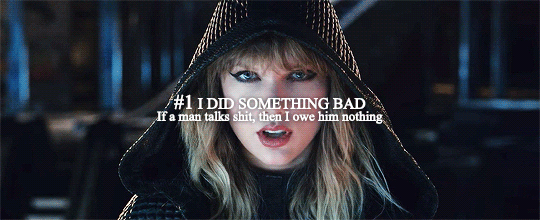
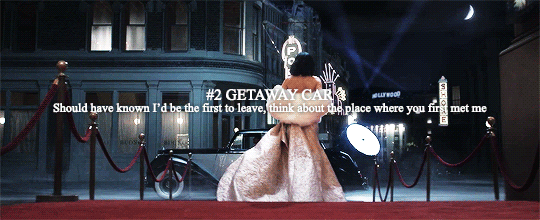
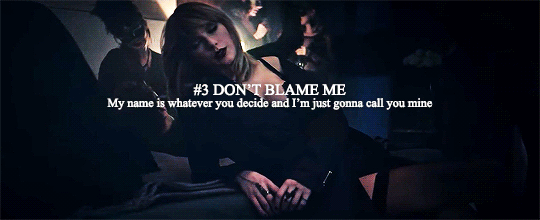
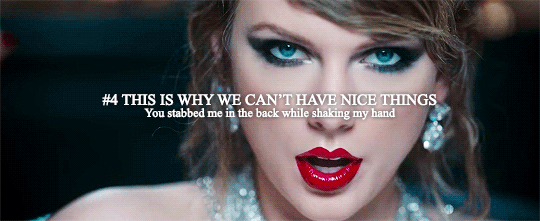
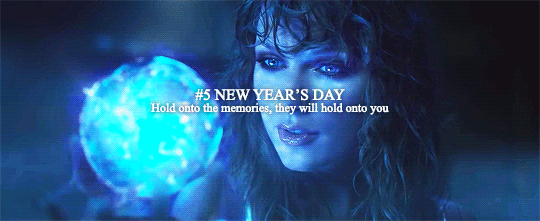
top five songs from reputation as voted by our followers
3K notes
·
View notes
Photo

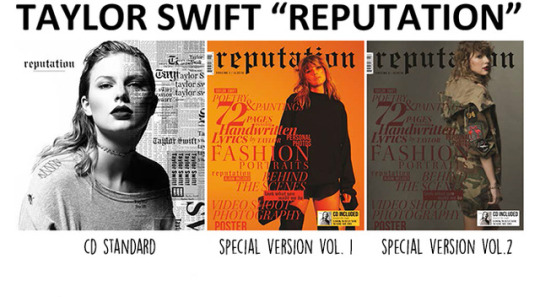
A new era of visual albums & Taylor Swift is going retro with a printed magazine. How will it compare to Witness and Lemonade. Why is she looking to keep it off of streaming services? How will the magazines contribute to the message of the album? How will the album make or break gender stereotypes in 2017?
2 notes
·
View notes
